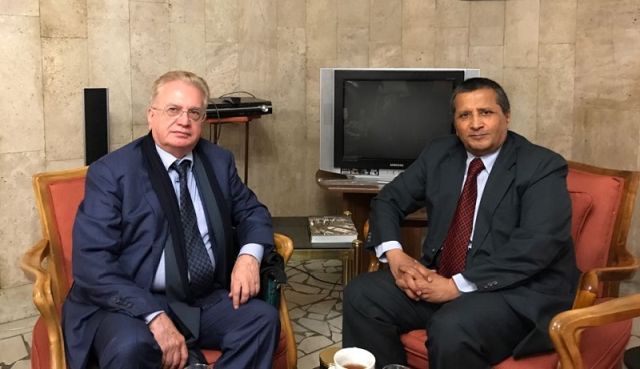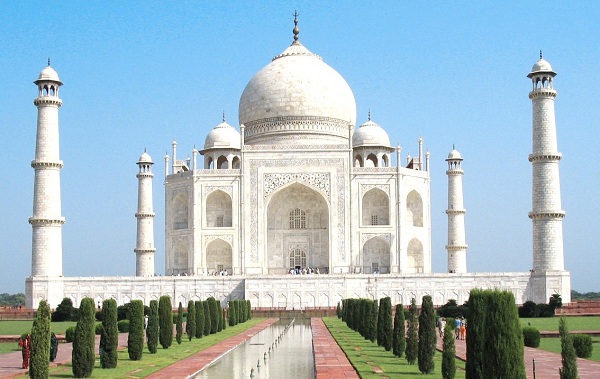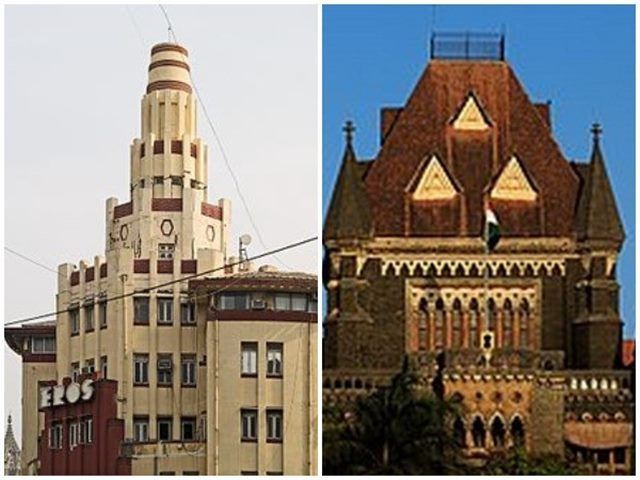
by admin | May 25, 2021 | Entrepreneurship, Muslim World, Social Entrepreneur

Representation Image (file photo)
Paris : A Bangladeshi activist for the disabled, Vashkar Bhattacharjee, and Chinese ICT company Tencent will be awarded the Unesco/Emir Jaber al-Ahmad al Jaber al Sabah Prize for Digital Empowerment of Persons with Disabilities in a ceremony at the Unesco headquarters here.
Bhattacharjee is a leading Bangladeshi advocate who works with local, national and international partners to produce resources for learners with disabilities, and to train teachers in the use accessible reading materials.
He and his colleagues also set up a network of employers that provide fair work opportunities to persons with disabilities, said Unesco.
Bhattacharjee has successfully developed a pioneering dictionaries in Bangladesh for people with visual, print and learning disabilities, and a special programme to help the disabled set up their own businesses through e-micro credit support, according to Unesco’s statement.
Tencent, a private Internet-based technologies and cultural enterprise, has won recognition for its outstanding contribution to the empowering and improving the quality of life of people with disabilities by using inclusive digital technologies to provide greatly enhanced access to information, the statement said.
The annual prize, supported by Kuwait, acknowledges outstanding contributions to the empowerment of persons with disabilities through the application of information and communication technologies (ICTs) to access information and knowledge.
The award ceremony is accompanied by a programme of events including concerts, exhibitions by Asian artists, a round-table discussion and a film screening to mark the International Day of Persons with Disabilities which falls on December 3.
This year’s theme for the Day is the empowerment of persons with disabilities, and ensuring inclusiveness and equality, part of the UN’s 2030 Agenda for Sustainable Development, that pledges to “leave no one behind”, the statement noted.
—IANS/AKI

by admin | May 25, 2021 | Muslim World
 Moscow : President of the Union of Museums of Russia Mikhail Piotrovsky, who is also the director of the State Hermitage Museum, confirmed that his country will work hard via the United Nations Educational, Scientific and Cultural Organization (UNESCO) on banning trading in Yemeni smuggled antiques, and resending them to Yemen.
Moscow : President of the Union of Museums of Russia Mikhail Piotrovsky, who is also the director of the State Hermitage Museum, confirmed that his country will work hard via the United Nations Educational, Scientific and Cultural Organization (UNESCO) on banning trading in Yemeni smuggled antiques, and resending them to Yemen.
In a meeting here on Monday with Yemen’s Ambassador to Russia Dr. Ahmad al-Wahishi, Piotrovsky was briefed on damages hit Yemeni historical and antique monuments as the greatest witness on catastrophic situations left by Houthi militia’s war. Al-Wahishi pointed out that the Yemeni manuscripts, antiques and antiquities, which have been looted and smuggled, date back to thousands of years.
Piotrovsky, who also chairs the Russian-Yemeni Friendship Society, made it clear that many committees in the UNESCO’s International Museum Council’s meetings suggested banning selling smuggled antiquities from heritage-rich countries and trading in them in international markets. He reviewed activities to be organized by the Hermitage Museum in Saint Petersburg on the 90th anniversary of the Russian-Yemeni Friendship.
—AB/UNA-OIC

by admin | May 25, 2021 | Corporate, Corporate Governance, News, Politics
 New Delhi : Slamming both the Central and Uttar Pradesh government for the neglect of Taj Mahal, the Supreme Court on Thursday wondered what if Unesco drops the 17th century Mughal monument from its list of world heritage sites.
New Delhi : Slamming both the Central and Uttar Pradesh government for the neglect of Taj Mahal, the Supreme Court on Thursday wondered what if Unesco drops the 17th century Mughal monument from its list of world heritage sites.
“It is a world heritage site. What will happen if Unesco say that we withdraw the world heritage title,” asked the bench of Justice Madan B. Lokur and Justice Deepak Gupta.
Asked if the authorities concerned have filed the management plan for the protection and preservation of the heritage site, Justice Lokur said: “It is very very difficult to understand something that is happening. Something is said on affidavit, something is said orally and something otherwise. It is unacceptable.
Coupled with this, the court also wanted to know which was the authority responsible for the protection and preservation of Taj as it found that the three affidavits filed before it were by the Uttar Pradesh Tourism Department, second by the Union Environment and Forest Ministry and third by some other authority.
“Somebody has to take the responsibility. Who has to take the responsibility for Taj – either Centre or Uttar Pradesh government with an identifiable authority?” the bench said.
As senior counsel A.D.N.Rao told the court that the Archaeological Survey of India was responsible for the Taj, the court expressed surprise that the it has been kept out of the consultation process for preparing the draft vision document for the protection and preservation of the Taj.
Ordering that a copy of the draft vision document be made available to the ASI and asking its to share it with INTACH, Agha Khan Foundation, ICOMS and other similar entities who have expertise in protecting and restoring the historic monuments, the court also directed the UP government to give a copy of the vision document to petitioner M.C.Mehta for his comments.
Sharing the court’s concern on the possibility of Unesco dropping Taj from the list of world heritage sites, Attorney General K.K. Venugopal told the court that the task involving the preservation and protection of Taj and other adjoining monuments including Agra Fort, Fatehpur Sikri and Sikandra fort at Mathura Ais massive and has to be carried by way of short term, medium and long term plan.
He told the court that short term plan itself would take two years to complete.
At the outset of the hearing, Justice Lokur took exception to Uttar Pradesh government filing the draft vision document asking if the state government expected the Court to “correct it.”
The court was told that the Taj Trapezium Authority was responsible for executing the larger plans fior the protection of heritage monument, Justice Lokur said had it been doing its job, things would not have come to such a pass.
The court directed it be told “categorically and unequivocally” who is responsible for the TTZ.
“Whether it is Union of India, then which Ministry, if it is Uttar Pradesh government, then which Ministry,” said Justice Lokur, adding that “we are in a situation where left hand does not know what right is doing”.
TTZ is an area of about 10,400 sq km spread over the districts of Agra, Firozabad, Mathura, Hathras and Etah in Uttar Pradesh and Bharatpur district of Rajasthan.
As the Attorney General referred to the draft vision document involving multi-pronged approach to preserve and protect the heritage monument, Justice Lokur confronted him with an affidavit by the Uttar Pradesh government which said that there were 1,167 polluting industries in the area.
Venugopal then sought to clarify that all of them were being operated on clean fuel and UP government’s standing counsel Aishwarya Bhati said it was just the nomenclature to describe them which is in use for long.
This drew the court’s ire.
“They are polluting industries, your affidavit says but you are saying that they are not polluting but by nomenclature they have been described so,” said Justice Lokur.
“There is something wrong with your English or there is something wrong with ours,” he added.
—IANS

by admin | May 25, 2021 | World
 By Vishal Gulati,
By Vishal Gulati,
Hoi An (Vietnam) : With over 20 million tourists visiting per year, this port city — a UNESCO World Heritage Site — produces approximately 27,000 tonnes of urban waste per year.
Most of the solid waste here, the country’s first “eco-city” — known for its pagodas, temples, ancient wells and tombs — was once finding its way into the ocean, streams and landfills, threatening the environment and the health of communities.
Now, household and tourism industry waste is sorted into three categories — recyclable, biodegradable and persistent — and disposed of under a pilot evolved by UN agencies with the involvement of locals, mainly women.
Result: Scientific waste disposal is not only enhancing community income and employment, but is also addressing local environmental and climate challenges while at the same time taking into account business interests.
Home to a harmonious blend of Vietnamese, Chinese and Japanese influences, Hoi An is located about 30 km south of the coastal city of Da Nang in Quang Nam province.
The credit of setting up the long-term waste management system that fosters sustainable development goes to a Global Environment Facility (GEF) Small Grants Programme, which came into existence in Hoi An in 2010. It basically aims at innovation and advocacy.
With the support of GEF, a financial mechanism for several environmental conventions, a women’s union piloted the project named “Socialisation of solid waste management in Hoi An”.
The project not only aimed to collect, segregate and dispose of the waste but also gave ample opportunity to poor local women to earn from it, a GEF spokesperson told IANS.
Biodegradable waste is composted at the household level and then used by local farmers for sustainable agriculture. Plastic, metal, and other recyclable waste is collected and sold to recycling facilities, while persistent waste is disposed of by the local government.
A revolving credit scheme gave loans to members of the groups and allowed the waste management programme to become viable.
Minh Hang, an octogenarian woman living in Hoi An, whose population density is six times higher than the national average, says the waste management programme helps her family get jobs.
She told IANS through an interpreter: “My entire family depends solely on waste collection and its disposal… it helps us earn a livelihood and also saves the environment.”
According to the United Nations Industrial Development Organisation (UNIDO), the Hoi An eco-town development, which is funded under the UN’s One Plan Fund, envisions active participation by people’s committees to implement green industry practices in small and medium enterprises, particularly those in the tourism, crafts and related sectors.
The local civic authorities were advised to arrange solid waste collection plans and promote gardening in the city by involving business houses.
United Nations Development Programme (UNDP) President Achim Steiner, who is the Vice-Chair of United Nations Sustainable Development Group, told IANS: “I think it takes the (local) leadership first. The private sector needs to be prepared to lead in this (in finding solutions to climate change) field also.”
“It (private sector) can’t be a passive player and they can’t wait for the government to solve the problem. So the first thing we in the UN family, not only in the UNDP, is to look for the leaders in the private sector because they are part of the change that we are calling for.”
Steiner, who was in Da Nang last week to meet with senior government leaders of Vietnam and attend the sixth GEF Assembly, was informally interacting with reporters there.
A passionate advocate of the Sustainable Development Goals, Steiner was categorical in saying that together with the private sector “we develop platforms on the issues of climate change”.
“The private sector is a key factor in allowing the 2015 Paris Climate Agreement to succeed,” he said, adding, “So, engaging the financial sector is going to be a key priority.”
“Environment change is still pacing our capacity to respond by far. Emissions are not coming down enough. So is the global footprint of our consumption. We have produced more plastic in the last 13 years than in the entire human history. And you see the exponential impacts on the planet.”
“We are still confronting this. There is enormous need for transformational change. And this in the backdrop in which national and international cooperation of multilateralism acting together and acting in solidarity to one another (is required),” he said.
Since 1998, GEF’s Small Grants Programme has supported more than 150 projects in Vietnam. The programme supports communities to demonstrate, deploy and transfer innovative tools and approaches for managing harmful chemicals and waste.
(Vishal Gulati was in Da Nang for the Internews’ Earth Journalism Network Biodiversity Fellowship Programme at the Sixth Global Environment Facility (GEF) Assembly. He can be reached at vishal.g@ians.in)
—IANS

by admin | May 25, 2021 | Business, Corporate, Corporate Buzz, Economy, News, SMEs
 Mumbai : The famed ‘art district of south Mumbai’ comprising Victorian Gothic and Art Deco Ensembles has been named as the latest – and India’s 37th – entrant to the coveted World Heritage Sites list, a Unesco announcement said on Saturday.
Mumbai : The famed ‘art district of south Mumbai’ comprising Victorian Gothic and Art Deco Ensembles has been named as the latest – and India’s 37th – entrant to the coveted World Heritage Sites list, a Unesco announcement said on Saturday.
The decision came on Saturday morning at the ongoing 42nd session of Unesco World Heritage Committee, from June 24-July 4, currently underway in Manama, Bahrain.
“Just inscribed as @UNESCO #World Heritage Site: Victorian Gothic and Art Deco Ensembles of Mumbai, India. Congratulations,” a UNESCO tweet said.
With this, India now has 37 World Heritage Inscriptions, ranking 6th in the world, and second only to China in the Asia-Pacific Region.
In a congratulatory message, Union Minister of State (In-charge) Mahesh Sharma said that this international recognition to the historical precinct of Mumbai is “a matter of great pride for the nation and will boost the local economy in a number of ways.”
Maharashtra government had first submitted its formal nomination proposal for the UNESCO honour in 2012 for the ‘Victorian Gothic and Art Deco Ensemble of Mumbai’, but it was edged out by other major Indian landmarks.
It was supported by the Centre, the BrihanMumbai Municipal Corporation, Mumbai Metropolitan Region Development Authority, several NGOs and art bodies, besides the Mumbai Heritage Conservation Committee.
The Ensemble comprises 94 buildings, of two architectural styles, the 19th century collection of Victorian structures and the 20th century Art Deco buildings along the Arabian Sea, conjoined by means of the historical open space of the Oval Maidan.
Together, this architectural ensemble represents the most remarkable collection of Victorian and Art Deco buildings in the world which forms the unique character of this urban setting, unparalleled in the world.
Among the Victorian styles are iconic buildings like the Bombay High Court, University of Mumbai campus, Maharashtra Police Headquarters building, the PWD Building, Watson’s Hotel, Elphinstone College, David Sassoon Library, and others ranked among the finest in the world.
Most of these buildings in stone were constructed during the late 19th century after demolishing the crumbling walls of the old Bombay Fort, and designed by masters like Sir Gilbert Scott, James Trubshaw and Lt. Col. James Fuller.
The later Art Deco development in the 20th century, comprising over 125 buildings identified by experts, was planned as per the designs of W. R. Davidge in the 1920s onwards, making it the second largest ensemble of such buildings in the world.
Significantly, it also symbolized the growing affluence and commercial importance of (then) Bombay, which was taking its baby steps to gigantic strides and emerge as the country’s financial capital after five decades.
Some of the prominent Art Deco structures that stand majestically include the Regal Cinema, Rajab Mahal, India Assurance Building, New Empire Cinema, Fairlawns building, Eros Cinema, several residential buildings on Marine Drive, and a few even in the northern parts of the island city.
However, no other city in the world has such a large ensemble emblematic of the 19th and 20th century architectural styles, literally facing each other over a small geographical area of urban design.
“Great News! Great day for Mumbai and Maharashtra! Mumbai has always been a world city and now structures and monuments are being listed in the UNESCO World Heritage site. Sincere thanks to all who have worked hard for this achievement! Congratulatoins Maharashtra!” Chief Minister said in a tweet.
With the latest addition, Mumbai region now has three World Heritage Sites, including two bang in the city with the other being the Chhatrapati Shivaji Maharaj Terminus, the Central Railway headquarters.
The other is on the outskirts of Mumbai is the picturesque Elephanta Caves in adjoining Raigad district, with beautiful rock cut images of Lord Shiva and a few Buddhist mounds, making it a global tourist attraction.
Dating back to the 5th-7th centuries, the group of caves were carved out in rocky terrain of the green and hilly Gharapuri Island, around 10 km off Mumbai in the Arabian Sea, and declared a World Heritage site in 1987.
With the latest honour, Maharashtra now boasts five – or the maximum number – world heritage sites than any other state in the country, includling the Ajanta and Ellora Caves in Aurangabad.
—IANS





